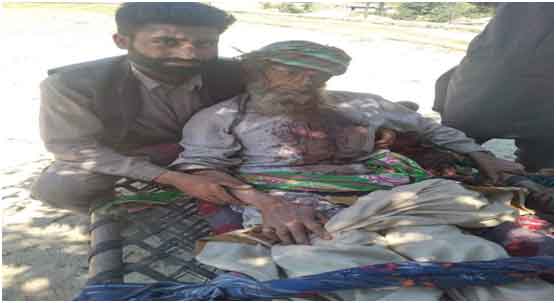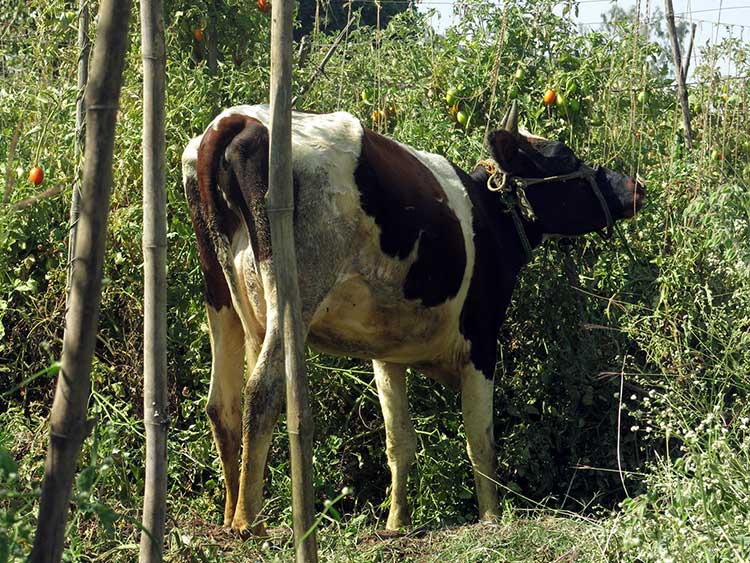
The cow is held as a sacred animal by a section of Hindus. But in the cases of lynching, it becomes a political animal with which to browbeat and even murder the minorities and the Dalits.
Ziya Us Salam, Lynching Files (2019)
The cow was never used for spiritual elevation. In the 20th century everybody used the cow as a political animal. In the late 19th and 20th century, Dayanand Saraswati used it for the mobilization of Hindus. This even resulted in many Hindu-Muslim riots. Since 1925, the RSS (Rashtriya Swayamsewak Sangh) has used it in the same way. It has been used for politics, not just simple politics, but communal politics. It is an attempt at polarization. The cow has nothing to do with the sacred or spiritual. It is just a political animal.
People have been eating beef all over. In Kerala, everybody eats beef, except the Namboodris. Some 72 per cent of the communities eat beef. They have been doing so traditionally. In north-eastern India it is very common. The RSS does not know what is happening in this country. They say only Muslims and Dalits eat beef. It is all nonsense. If you go back in history, there is so much mention of cattle sacrifice and of cows being killed to propitiate deities. There is no doubt that cows were killed and that Brahmins eat cow meat. The practice continued even after the Vedic period. It existed during the Buddhist period and also during the time of the Mauryas. The Manu Smriti also mentions it. These fellows (Hindutva proponents) do not realize that the historical evidence is totally against their viewpoint. Everybody knows that cows were killed on such occasions as marriage, the sacred thread ceremony, the arrival of the guest, at the time of death, at the time of house-warming. There are many instances listed in scriptures. If there was an honourable guest, he would be served cow meat. In agrarian societies it was very common. It took Brahmins a long time to change their outlook towards the cow. Later, much later, they gave up eating its meat. If you look at the Vedas or the Dharma Sutras, cow killing was fine. After the Mauryan period, reference [to cow slaughter] become fewer and fewer in the texts. Towards the beginning of the first millennium A.D., this change was taking place, mainly in northern India (qtd. in Salam).
The sacrifice of the horse or of the cow, the gomedha or ashvamedha, appears to have been common in the earlier periods of the Hindu ritual. Indian scholars like P.V. Kane and H.D. Sankalia who have been read by students at undergraduate level for half a century, too did not shy away from stating that cow flesh was part of diet in ancient India. Kane in History of Dharmashastra referred to Vedic passages which talk of cow killing and beef eating. Similarly, Sankalia put together archaeological evidence of cow flesh being part of the diet in ancient India (qtd. in Salam).
Salam analysed when and how cow occupied a prominent place among some Hindus. It was after the failure of the Revolt of 1857 that the cow came to occupy important space in the life of a Hindu, at least in north India. From the mid-1870s, demands were made to prohibit cow slaughter. Gaurakshini sabhas came into being. Starting with Punjab, they spread to Gujarat, even Awadh. Incidentally, the first foes of gaurakshini sabhas were not Muslims but the British, whom they held responsible for slaughtering cows for their kitchen on a regular basis. It was only in the early years of the twentieth century that gaurakshini sabhas focussed on Muslims as possible perpetrators of cow slaughter. That is when the cow protection movement came to develop communal hues, and noises to ban cow slaughter became shrill. So much so that various Hindu organizations like the RSS started regarding the Muslims, and not the British, as the main enemies. Amazingly, V.D. Savarkar did not raise his voice against cow slaughter, and in an even more shocking development, Swami Vivekananda recommended beef eating as the easiest way to develop a muscular, energetic society.
After the Partition though, this teaching of Vivekananda was forgotten, as was Savarkar’s opposition to regarding the cow as a sacred animal. Instead, the Jana Sangh started a long drawn out ant-Muslim campaign which focussed on the cow as a mother (mata), and with increasing vigour prevailed upon many state assemblies in Independent India to ban cow slaughter.
Today, the animal is used to marginalize both Muslims and Dalits: the former being lynched for transporting the animal, the latter for skinning the dead cows. The Muslims and Dalits find themselves on the same side of the divide, much against the situation in medieval India, when well-off Muslims would prefer mutton, and poor sections of Hindus and Muslims often made do with beef.
Salam opined that the murder of Akhlaq, the stripping and thrashing of the victims of Una are public statements of men who have forgotten their own history. Had the killers of Akhlaq or the perpetrators of torture in Una read their history rather than listening to their neighbourhood part president, things would have been entirely different.
More than 80 million people eat beef/ buff in India, including 12.5 million Hindus. Data from the latest National Sample Survey Office (NSSO) round shows that around 80 million people—around 1 of every 13 Indians—eat beef or buffalo meat. That number is almost the same as Germany’s population and is spread across religions and states. The biggest chunk of beef eating population is Muslim by faith, according to NSSO data. Around 63.4 million Muslims consume beef/buffalo. That adds upto 40% of the total Muslim population. For Christians, this figure is around 26.5%. Although, less than 2% Hindus eat beef/ buffalo, they are ranked second in absolute terms. More than 12.5 million Hindus consume it.
Among religious groups, there are considerable variations across caste groups. Apart from Muslims, schedule castes and schedule tribes (SC/ST) comprise the majority of beef-eating population. Among Hindus, more than 70% of the beef-eating population is SC/ST, 21% is other backward castes and only 7% is upper caste (others category).
Consumption patterns vary across states as well. The largest beef/buff consuming state is not the Muslim majority Jammu and Kashmir but Meghalaya, where more than 80% of the population consumes this meat. Among larger states, Jammu and Kashmir, Kerala, Assam and West Bengal show a relatively higher share of beef/buffalo-consuming population.
In any case, it is clear from the NSSO data that beef eating cannot be attributed solely to any one particular religious group in the country. In many regions of the country, a large number of non-Muslims eat beef (Kishore and Anand).
L. K. Sharma in his book india’s Soul Possessed, (Chapter 20) stated that in India the docile cow has beaten Trump in its polarizing powers. The cow has highlighted religious, regional, social and cultural differences. It has brought the issues of human rights and democracy to the fore. People are being lynched in the name of cow protection. The violence by cow vigilantes against the butchers and cattle traders has caused the fear of creeping Fascism, as these self-styled groups decide what the people should not eat. Beef is part of the daily diet of many sections and of the majority in some regions. With the rise of a Hindu nationalist party BJP, the cow worshippers are violently asserting their faith in public and lynching the Muslims, Dalits and Christians with the full support of the State.
References:
- Salam, Ziya Us. Lynch Files: The Forgotten Saga of Victims of Hate Crime. Sage, 2019. pp. 9-14.
- Kishore, Roshan and Ishan Anand. “Who are the beef eaters in India?” The Mint, 20 Oct. 2015, accessed 8 Feb. 2023, available at: https://www.livemint.com/Politics/RhPVLUFmclIDWRIiSoTC7N/Who-are-the-beef-eaters-in-India.html
- Sharma, L. K. india’s Soul possessed. Chapter 20: Of Sacred Cows and Profane Men. Medialand. Kindle Edition.
Abu Siddik teaches at Plassey College, West Bengal, India. He is a bilingual author and has been published in India and abroad. He has three critical books— Representation of the Marginalized in Indian Writings in English (Falakata College Cell, 2015), Misfit Parents in Faulkner’s Select Texts (Authorspress, 2015), Banglar Musolman (Sopan, 2018); two poetry books and a short story, published by Authorspress in 2020 —Rugged Terrain, Whispering Echoes, A Birdwatcher and Other Stories. Website: www.abusiddik.com
















































